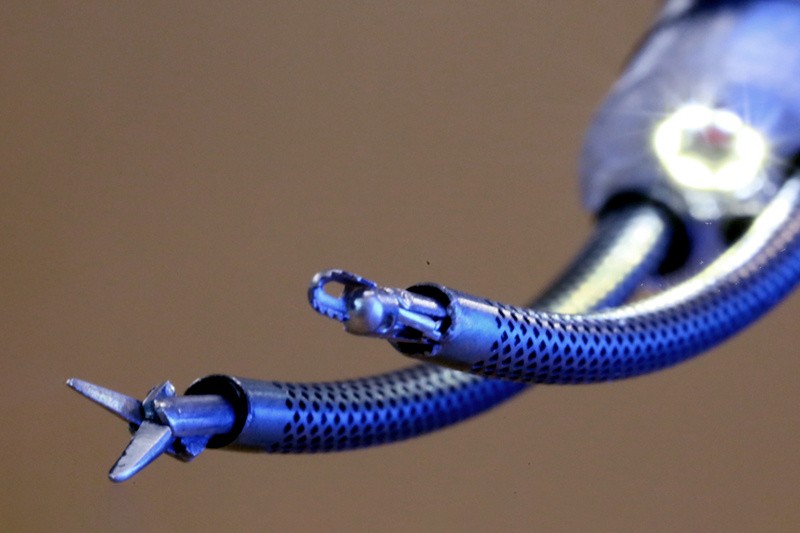Experts developed an innovative surgical robot specializing in removing brain tumors in children, thanks to its distinctive feature-hollow arms.

Surgical Robot Removing Brain Tumors in Children
Engineer Pierre Dupont, PhD, chief of Pediatric Cardiac Bioengineering at Boston Children's Hospital, developed this innovative robot designed with the agility required to perform delicate brain tumor removal procedures in the small skulls of pediatric patients.
In consultation with neurosurgeon Scellig Stone, MD, PhD, and others, Dupont elaborated on the unique design considerations, saying: "We needed to use basically hollow arms."
Dupont delved into the various technological options explored to achieve this, including tendon actuation similar to steerable catheters and the technology utilized in robotic bronchoscopes.
Furthermore, Dupont mentioned another innovative approach known as concentric tube robots, a concept he had developed during his tenure at Boston University that has garnered attention from contemporaneous researchers.
Read Also : AI Brain Surgery Is Coming to Hong Kong
Expanding the Workspace of Concentric Tube Robots
Dupont explained that their significant technological advancement involves expanding the workspace of concentric tube robots, enabling them to bend more effectively from left to right while maintaining precise balance.
Interesting Engineering reported that this breakthrough could revolutionize brain surgery and even be applied to adult patients, significantly improving their chances of surviving high-risk operations.
Dupont described the current state of brain surgery, saying 90% of procedures are being performed as open surgeries. Surgeons use microscopes to navigate and often move healthy brain tissue aside to reach the affected area.
Endoscopic procedures, on the other hand, are more limited, often requiring one-handed operations with a single tool. However, with robotic assistance, Dupont noted that surgeons can harness the benefits of both approaches: utilizing both arms as in open surgery while employing a variety of tools, all with minimal invasiveness.
Under Dupont's guidance, a team of MBA students from Babson College is actively exploring avenues to bring this groundbreaking technology to the market.
However, Dupont noted that it is still too early for strategic investors to become involved. He also revealed discussions with device manufacturers who expressed interest in the robot, but they are awaiting the completion of its initial human trials.
Other Innovations
Previous technological innovations have ushered in a new era of precision and safety in brain surgeries. However, Dupont's interview with Medical Design and Outsourcing revealed that this robotic innovation possesses a distinctive attribute: pre-curved nitinol tubes.
That imparts sufficient rigidity to withstand the demands of surgery, thereby affording surgeons a more spacious and accommodating working environment. Robotic brain surgery presents many benefits, with one of the most notable advantages being its ability to conduct exact and steady procedures.
These robotic systems excel in counteracting any inherent hand tremors experienced by surgeons, thereby significantly enhancing precision during complex surgical interventions.
In addition, neurosurgical robots are typically crafted to cater to minimally invasive procedures. They forego the necessity for extensive craniotomies and, instead, employ smaller incisions and specialized instruments to reach the brain.
This progressive methodology has the potential to significantly reduce recovery periods and minimize the risk of post-operative complications.
Prominent examples of neurosurgical robots include the famous da Vinci Surgical System, employed in various surgical domains, including brain surgery, and the ROSA (Robotic Stereotactic Assistance) system, purpose-built for neurosurgical applications.


![Apple Watch Series 10 [GPS 42mm]](https://d.techtimes.com/en/full/453899/apple-watch-series-10-gps-42mm.jpg?w=184&h=103&f=9fb3c2ea2db928c663d1d2eadbcb3e52)


